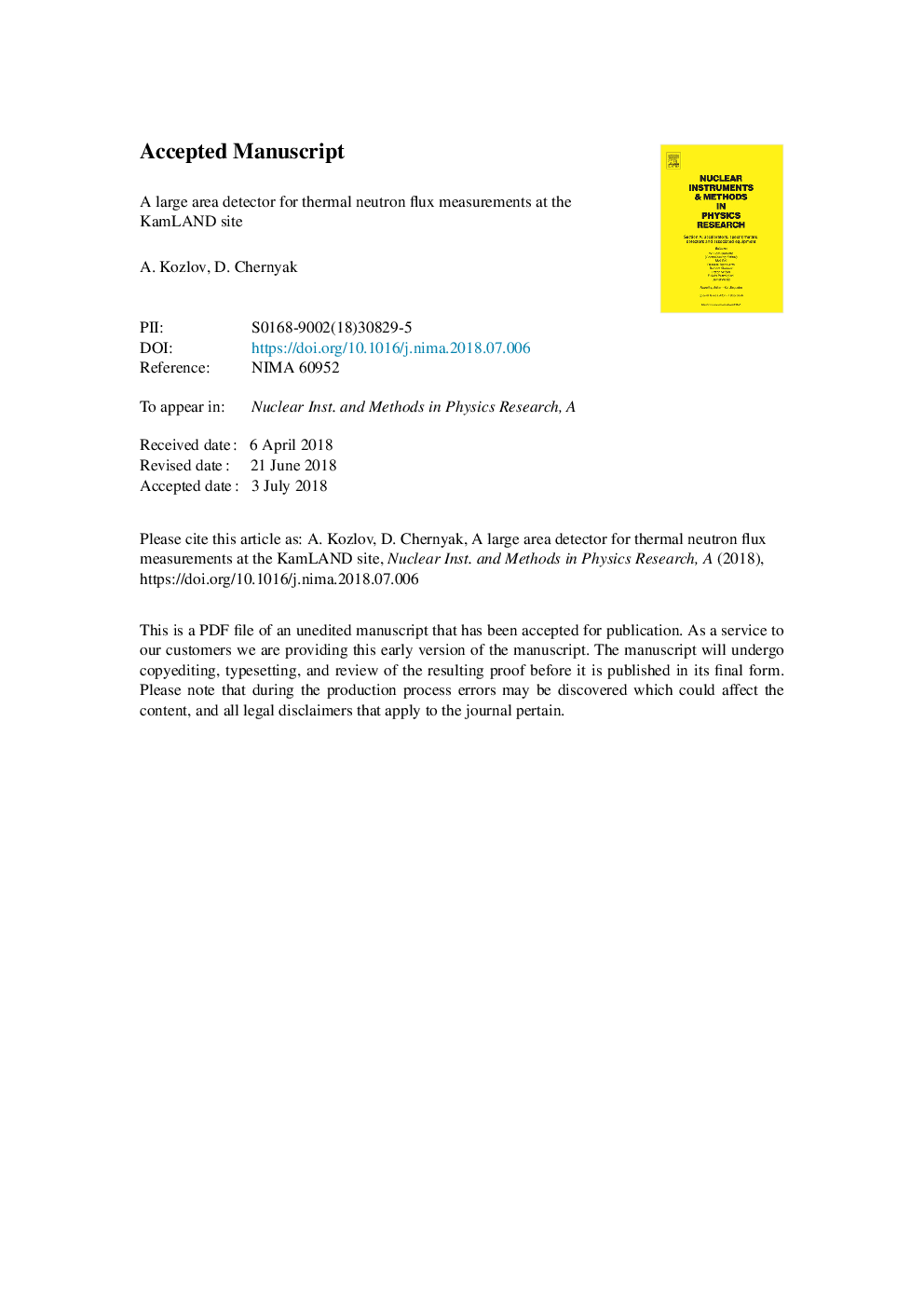| Article ID | Journal | Published Year | Pages | File Type |
|---|---|---|---|---|
| 8165965 | Nuclear Instruments and Methods in Physics Research Section A: Accelerators, Spectrometers, Detectors and Associated Equipment | 2018 | 27 Pages |
Abstract
A large area (0.5 m à 0.5 m) thermal neutron detector was developed based on 0.32 mm-thick  6LiF:ZnS(Ag) scintillator sheets. The detector was constructed for measurements of seasonal variations in low intensity thermal neutron flux at deep underground sites. The detector response to neutrons was studied using a low intensity  241Am/9Be(α,n) neutron source. The digital pulse shape discrimination technique was applied to separate neutron capture events from the background caused by traces of α-emitters from Uranium and Thorium decay chains in scintillator components. The thermal neutron detection efficiency was 0.368 ± 0.018 (0.155 ± 0.009) before (after) event selection based on the digital pulse shape discrimination method. The measured α-particle background event rate in the  6LiF:ZnS(Ag) scintillator was (4.88 ± 0.06(stat))Ã10â6α cmâ2 sâ1. As a test of detector performance we measured the thermal neutron flux at the KamLAND area of the Kamioka neutrino observatory and compared it with result of the neutron flux measurement carried out at the Super-Kamiokande site. The thermal neutron flux at KamLAND was (6.43 ± 0.50)Ã10â6 n cmâ2 sâ1 that included â¼10% contribution from neutrons with energies above 1 eV. During the detector construction we identified a source of high amplitude noise pulses generated by 5-inch R1250 photomultipliers manufactured by Hamamatsu Photonics K. K.
Keywords
Related Topics
Physical Sciences and Engineering
Physics and Astronomy
Instrumentation
Authors
A. Kozlov, D. Chernyak,
